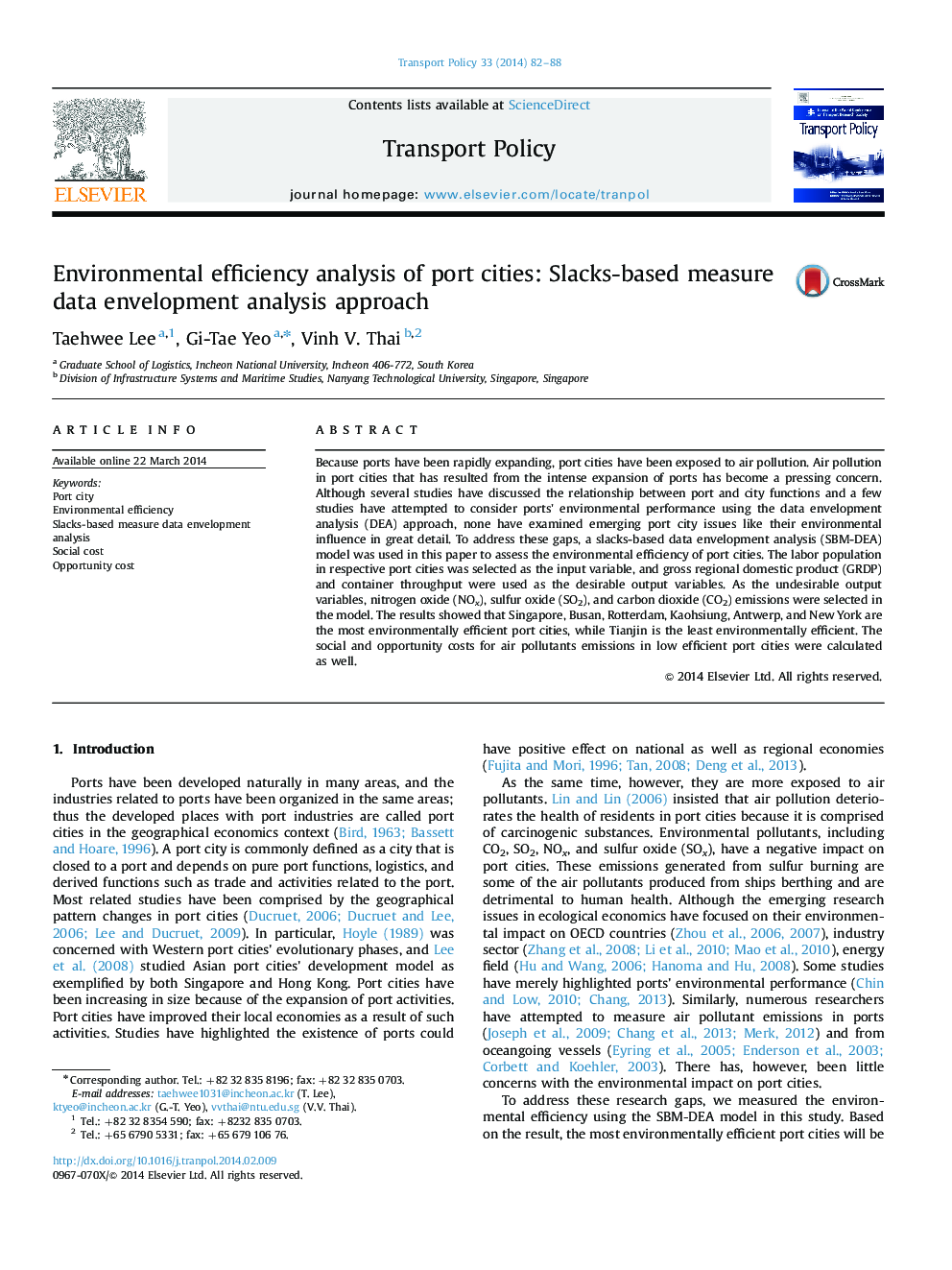| کد مقاله | کد نشریه | سال انتشار | مقاله انگلیسی | نسخه تمام متن |
|---|---|---|---|---|
| 1064839 | 1485844 | 2014 | 7 صفحه PDF | دانلود رایگان |

• This paper attempts to evaluate the environmental efficiency of port cities.
• A slack-based data envelopment analysis (SBM-DEA) model was used.
• As the undesirable output variables, NOx, SO2, and CO2 emissions were selected.
Because ports have been rapidly expanding, port cities have been exposed to air pollution. Air pollution in port cities that has resulted from the intense expansion of ports has become a pressing concern. Although several studies have discussed the relationship between port and city functions and a few studies have attempted to consider ports׳ environmental performance using the data envelopment analysis (DEA) approach, none have examined emerging port city issues like their environmental influence in great detail. To address these gaps, a slacks-based data envelopment analysis (SBM-DEA) model was used in this paper to assess the environmental efficiency of port cities. The labor population in respective port cities was selected as the input variable, and gross regional domestic product (GRDP) and container throughput were used as the desirable output variables. As the undesirable output variables, nitrogen oxide (NOx), sulfur oxide (SO2), and carbon dioxide (CO2) emissions were selected in the model. The results showed that Singapore, Busan, Rotterdam, Kaohsiung, Antwerp, and New York are the most environmentally efficient port cities, while Tianjin is the least environmentally efficient. The social and opportunity costs for air pollutants emissions in low efficient port cities were calculated as well.
Journal: Transport Policy - Volume 33, May 2014, Pages 82–88